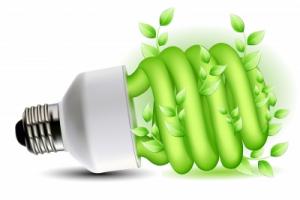- 9 reads

Compact Fluorescent Lights, otherwise known as CFLs, have come a long way since they entered the lightbulb market a few years ago. Along with their light-emitting diode cohort (aka LEDs), they’ve become standard fare at home furnishing stores and can now be dimmed, diffused and clustered for maximum impact.
Godo Stoyke, author of The Carbon Buster’s Home Energy Handbook: Slowing Climate Change and Saving Money, writes that switching to CFLs will save the average household $350 over a five-year period, not to mention a whopping 4,500 pounds of carbon dioxide and 3,500 kilowatt-hours of power. For a lifetime of CFL use, that works out to just under $1,000 saved in lighting costs and 12,800 pounds less carbon dioxide out and about in the atmosphere.
These bulbs are more efficient, less expensive and much more eco-friendly; and in the case of LEDs, cooler and more durable than regular Einstein bulbs. It’s important to know that CFLs contain trace amounts of mercury -- an average of 5 milligrams, considerably less than the 500 milligrams or so that was present in older thermometers -- and need to be recycled properly. Home Depot offers a nationwide recycling program, and many local recycling centers are set up to take back old CFLs as well.
Of course, since these bulbs will last you longer than usual, you won't have to worry too often about how to dispose of them.
For original article by Alison Baenen via GreenGoesSimple.com click here or visit http://www.greengoessimple.com/blog/cfl_bulbs/index.html

